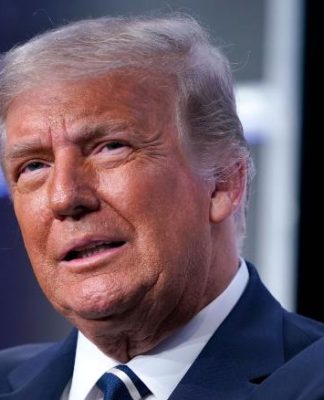POLITICSWhich Countries Receive the Most Foreign Aid from the U.S.?Published 1 day ago on October 14, 2023
By USAFacts green checkmark icon Featured Creator
Article/Editing:
Bruno Venditti
Which Countries Receive the Most Foreign Aid From the U.S.?
The United States provided more than $50 billion in aid to over 150 countries and territories, regional funds, and NGOs in 2021.
Each year, Congress appropriates foreign assistance based on national security, commercial, and humanitarian interests.
In this map, USAFacts uses data from the U.S. Agency for International Development (USAID) to highlight the countries that received the largest portion of aid.
Food Assistance and the War on Drugs
In 2021, the U.S. directed its aid towards nations grappling with internal conflicts and humanitarian crises.
Following the withdrawal of American troops that same year, Afghanistan emerged as the primary recipient of substantial aid, receiving billions of dollars annually as part of the humanitarian response.
Country Assistance (USD) Top Activity
🇦🇫 Afghanistan $1.5 billion Humanitarian Assistance
🇪🇹 Ethiopia $1.4 billion Emergency Food Assistance
🇯🇴 Jordan $1.3 billion Cash Transfer
🇾🇪 Yemen $1.1 billion Emergency Food Assistance
🇸🇸 South Sudan $1.0 billion Emergency Food Assistance
🇨🇩 DRC $891 million Emergency Food Assistance
🇸🇾 Syria $844 million Humanitarian Assistance
🇳🇬 Nigeria $828 million Global Health Supply Chain
🇨🇴 Colombia $761 million Counter-Narcotics
🇸🇩 Sudan $620 million Emergency Food Assistance
Among the top countries benefiting from U.S. assistance are various African nations contending with both famine and internal conflicts. Notably, Colombia stands out in the top 10, receiving millions of dollars to combat drug trafficking.
Israel Leading in Aid Over Time
Since the end of World War II, the U.S. has disbursed more than $3.75 trillion in foreign aid (adjusted for inflation).
The post-war years saw foreign aid peak, primarily because of the Marshall Plan. This initiative aimed to assist in restoring the economic infrastructure of post-war Europe.
At its height in 1949, U.S. foreign aid totaled nearly $100 billion.
Israel has been by far the largest cumulative recipient of U.S. foreign assistance. Since the 1940s, Israel has received more than $300 billion, with most of it in military support, aiding the country in developing a missile defense system and other projects.
us foreign aid, top 5 countries over time
The primary reason for this foreign aid has been to guarantee U.S. interests in the region, given Israel’s proximity to Syria to the northeast, Hezbollah-influenced Lebanon to the north, and an Islamist insurgency in Egypt’s Sinai to the south.
After a two-decade conflict that took millions of Vietnamese lives and roughly 58,000 American lives, Vietnam is Washington’s second-largest recipient of financial support. This money is used for economic and technological cooperation, military support, and even to aid cleanup efforts from the U.S. military’s use of Agent Orange in Vietnam during the war.
Since 1975, Egypt has been a significant recipient of substantial foreign aid from the United States, primarily as part of diplomatic efforts to mitigate tensions in the Arab-Israeli context.
Washington also sent large aid packages to South Vietnam, South Korea, and other countries during the Cold War.
Since 2003, much of the money has been directed toward Iraq, Afghanistan, and Pakistan.
The Debate Surrounding U.S. Foreign Aid
According to a recent report by the Congressional Research Service, foreign aid can serve as a means to bolster the United States’ global influence, tackle worldwide challenges, and advance common values.
Nonetheless, the same report reveals that certain Americans and Members of Congress consider foreign aid an expenditure the country cannot afford, given current budget deficits and competing budget priorities.
In 2021, U.S. assistance to other countries accounted for around 0.7% of the federal government’s total expenditures.
green check mark icon
This article was published as a part of Visual Capitalist’s Creator Program, which features data-driven visuals from some of our favorite Creators around the world






























